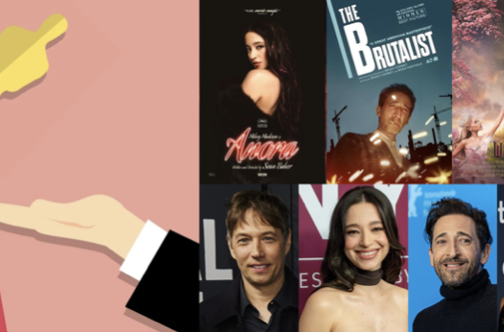The 97th Academy Awards were handed out last night with over a billion people around the world witnessing the ceremonies successfully hosted by Conan O’Brien. The independent movie dubbed the strip club Cindrella story, Anora, was the big winner of the night with five wins with four in major categories. It was a Cindrella story, indeed, as Oscar-winning director Sean Baker achieved wonders by becoming the first person in Academy Awards history to win four Oscars in the same night for the same movie. This, despite a meager $6 million budget going up against the big budget behemoths like Dune: Part Two with its $190 million purse.

The Brutalist claimed three Oscars followed by Wicked and Dune: Part Two with two each. The controversial musical entry, Emilia Perez, with a near record 13 nominations only ended up with the Best Supporting Actress and Best Original Song Oscars when it was all said and done.
Prediction Results and Analysis
This year, we got six of the eight major categories right. Our models missed out on the highly competitive Best Actress category having picked Demi Moore over Anora‘s Mikey Madison, whom was our second choice. In the historically challenging screenplay categories, we had the right pick in Anora for the Best Original Screenplay but didn’t get a hit on the Best Adapted Screenplay having picked the longshot Nickel Boys over the eventual winner Conclave.
In the craft/technical categories, we had a decent hit rate of seven out of eleven this year. Best International Film and Best Animated Film awards went to our second picks while Best Film Editing and Best Original Score winners were our fourth overall picks. We’ll definitely do some more homework in those areas in the coming years. In conclusion, we predicted 13 out of 19 award winners for a 68% overall hit rate.
Despite those misses, our models did well since getting 13 out of 19 predictions right with anywhere between 5 to 10 nominees for each category is equivalent to finding the one correct combination out of 2,441,406,250 possible combinations. The tables below summarize the prediction outcomes per category.


Of course, we always welcome our users to come up with creative ideas of their own including adding new data points to further enrich our public dataset. This is consistent with BigML’s long-term commitment to making Machine Learning accessible to everyone thanks to transparent white-box modeling and workflows built on top of our proven algorithms.
History to Date Predictions Performance
We’ve also updated the cumulative table below that compiles all our predictions between the 2018 and 2025 Oscars and the corresponding hit rates for the major categories. In addition to the Top Picks that we annually shared in our past blogs, this table lists how the accuracy metric improves if we also consider the movies that received the highest two (Top 2) or three (Top 3) scores. The Top Picks alone had an average 71% hit rate, whereas the coverage reaches 95% with the Top 3 taken into account.

As the pioneers of ML-as-a-Service here at BigML, we invite many more of you to put your Machine Learning skills to the test quickly with this very approachable skills practice use case and do so without the overhead of having to download and install many open-source packages worrying about compatibility issues or hard-to-decipher error messages. It takes just 1 minute to create a FREE account and about as much time to clone the movies dataset to your account. As always, let us know how your results turn out at [email protected]!








